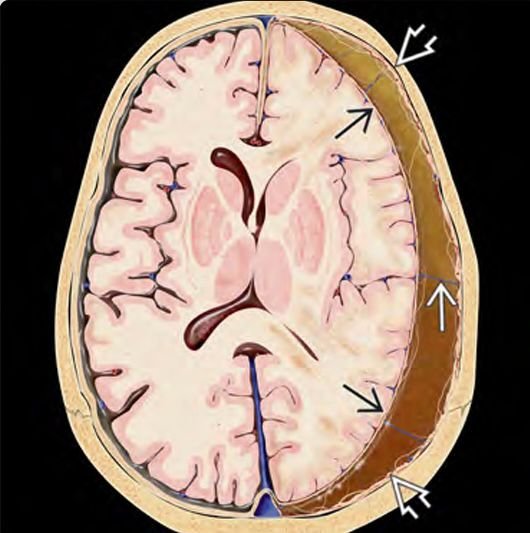Skull Fractures
Skull Fractures
Skull fractures in children are serious traumatic injuries that occur when a forceful impact causes a break in the bones of the skull. In Bangladesh, these injuries commonly result from falls, road traffic accidents, physical assault, or sports-related trauma. Skull fractures can be simple or complex and may be accompanied by intracranial injuries such as bleeding, brain swelling, or cerebrospinal fluid (CSF) leaks. Prompt diagnosis and expert neurosurgical intervention are essential to prevent life-threatening complications and long-term neurological impairment. Dr. Md. Nafaur Rahman is a leading pediatric neurosurgeon in Bangladesh offering specialized diagnosis, surgical treatment, and follow-up care for all types of skull fractures in children. Causes of Pediatric Skull Fractures in Bangladesh In the local context, common causes include: Falls from rooftops or stairs – especially in rural and semi-urban areas Road traffic accidents involving rickshaws, motorcycles, and auto-rickshaws Child abuse or non-accidental trauma – often underreported in Bangladesh Playground injuries – from swings, jungle gyms, or sports activities Birth trauma (in neonates) – particularly in difficult or instrument-assisted deliveries Types of Skull Fractures in Children Linear Skull Fracture Most common type in children A thin, straight break without bone displacement Often heals without surgery if no underlying injury Depressed Skull Fracture A portion of the skull bone is pushed inward May require surgical elevation to prevent brain damage or cosmetic deformity Diastatic Skull Fracture Involves widening of cranial sutures in infants May be associated with growing skull fractures or brain herniation Basilar Skull Fracture Fracture at the base of the skull Often presents with CSF leak, raccoon eyes, or Battle’s sign High risk of meningitis or cranial nerve injury Growing Skull Fracture (Leptomeningeal cyst) Occurs in infants when a fracture expands due to brain pulsation Requires neurosurgical repair to prevent further damage Clinical Features and Symptoms Children with skull fractures may present with: Headache or vomiting Scalp swelling or visible indentation Loss of consciousness or drowsiness Seizures or irritability Clear fluid leakage from nose or ears (CSF leak) Bruising around the eyes (raccoon eyes) or behind the ears (Battle's sign) Developmental delay in cases of growing fractures Any such signs after trauma demand immediate medical evaluation. Diagnosis of Skull Fractures Clinical Examination Full neurological evaluation Inspection for skull deformity, CSF leak, or swelling Radiological Investigations CT Scan of the head – gold standard for fracture identification and brain injury assessment MRI Brain – useful in detecting subtle soft tissue and dural injuries X-rays – may be used in specific cases or rural settings, but limited in accuracy Management Strategy in Bangladesh Conservative Management Most linear fractures without brain injury can be treated conservatively Close observation, rest, and repeat imaging if symptoms worsen Surgical Management by Dr. Md. Nafaur Rahman Surgery is indicated in: Depressed skull fractures with brain compression or cosmetic concern Growing skull fractures with dural tear and brain herniation Basilar fractures with persistent CSF leak or recurrent infections Hematoma evacuation if associated bleeding is life-threatening Repair of dura and reconstruction to prevent neurological complications Advanced surgical care is offered at the National Institute of Neurosciences & Hospital (NINS) and the Bangladesh Paediatric Neurocare Centre, using modern neuroimaging, neuronavigation, and pediatric ICU support. Long-Term Effects and Rehabilitation Seizure disorders Cosmetic skull deformity Developmental delay Persistent neurological deficits Psychosocial trauma (especially in abuse cases) Early surgical intervention and long-term neuro-rehabilitation significantly improve outcomes. Child Safety and Prevention in Bangladesh Use of helmets and car seats in children is critically low Rooftop railings, safe play areas, and parental supervision must be promoted Awareness against child abuse and violent discipline is crucial Government and NGO collaboration needed for child trauma awareness programs Why Consult Dr. Md. Nafaur Rahman? Expert in pediatric skull and brain trauma surgery Over a decade of experience treating complex pediatric neurosurgical conditions Offers comprehensive diagnostics, surgery, and rehabilitation Compassionate, family-centered care model Available for urgent trauma referrals across Bangladesh Contact Information Dr. Md. Nafaur Rahman Assistant Professor, Department of Pediatric Neurosurgery National Institute of Neurosciences & Hospital (NINS) Chief Consultant, Bangladesh Paediatric Neurocare Centre 📞 Appointment or Emergency Call: 📱 01912988182 | 01607033535 🌐 Visit: www.neurosurgeonnafaur.com
YouTube Videos and Patient Reviews on Skull Fractures










